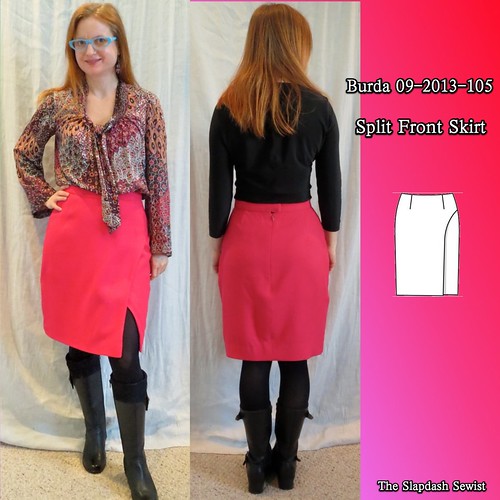
After a long stretch of unappealing, Burda finally started getting interesting again late last year.
Burda 09-2013-105 was one of the patterns that went on my list as soon as the magazine arrived. It has a pencil skirt silhouette, but the front wrap/split means that it's fairly bikeable. Perfect!
I shortened the skirt
three inches before cutting and still had a generous hem allowance for a skirt longer than I usually wear. This would have been mid-calf had I not shortened it. Because the shapes of the front openings is the major part of the design here, for my short legs the skirt needed to be at full knee length so the graceful arcs would have their full space to be graceful. When I pinned it at a shorter length it lost a bit of its sophistication.
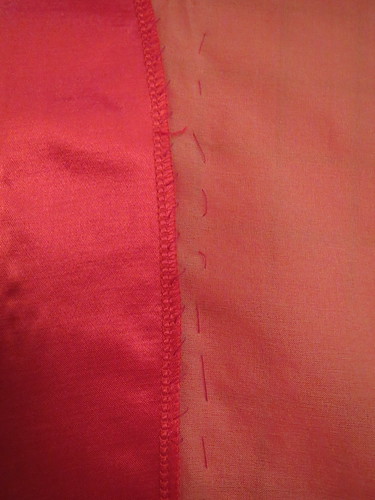
I love wool crepe for office clothes. The only downside is that it wrinkles almost as much as linen. To attempt to keep the wrinkling slightly under control, I underlined it with silk organza. I stitched the silk organza as one with the fashion fabric at the darts and the seams. To keep the organza in place I hand-basted it 1/2 inch in from the seam allowances. Yes, I hand basted. You can also see where I hand stitched the facings to the organza.
I was afraid that with four layers of fabric at the front waist and belly (two wool and two organza) it would be bulky and add unwanted depth to the gastric region, but it actually sits surprisingly flat.
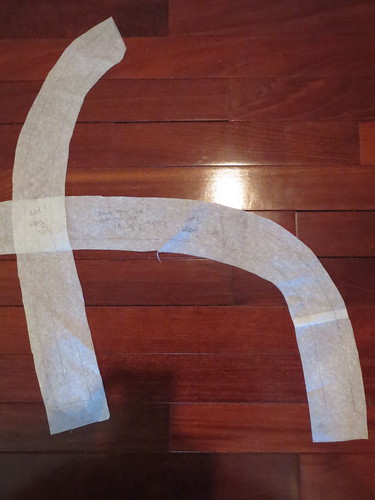
When cutting the facings for the skirt front opening edges, be sure to cut them wrong side of the fabric up. Mirror images always trip me up. I first cut them right side up, as I had the skirt fronts, and was then surprised when they wouldn't match up with the fronts. I made a huge note on the pattern pieces to remind me for next time.
The pattern is not drafted with a lining. Another downside of wool crepe is that it is surprisingly sheer, even when the fabric is relatively thick. Wearing a regular half slip to deal with the problem was out because of the shape of the front slit so I lined it with a satin rayon. I bought 3 colors of satin rayon when Fabric.com had them on sale in September 2010 for $2.97/yd. This was the last of the hot pink and I am sad to see it end. I've looked for satin rayon for linings since then and never found any as nice at a reasonable price. I should have bought their entire stock.
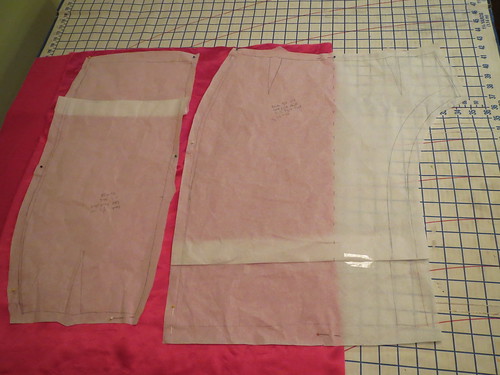
To cut the front lining I used the pattern piece for the right front, which has center front conveniently marked. I placed the CF marking on the fold and cut. The darts on this are fairly wide set and really do sit well over my abdomen. Normally I get some puffing but it is not noticeable here. I might give this pattern a try as a plain pencil skirt, cutting using the same method as for the lining.
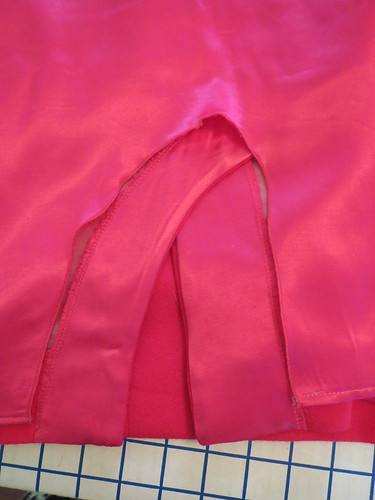
To keep the lining from showing through at the front slit, I did not come up with an elegant solution. I didn't want to use the skirt pieces as drafted and have SIX layers (two wool, two organza, two lining) in the front. That just seemed like too much. I just cut a big ol' upside-down U shape out of it and did a serger rolled hem on the edge. If I make this again, I will likely just underline with the lining fabric and call it a day.
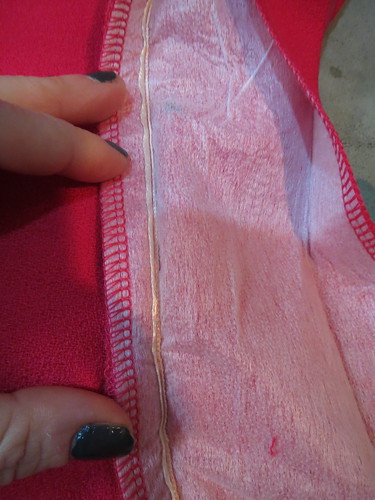
The pattern is drafted with waist facings, but a waistband is much more
flattering on me. I can never figure out tucking with a non-waistband
skirt, and I feel like the skirt collapses and creases more at the front
from sitting without being held in place by a waistband. I just cut a
straight strip of fabric for the waistband, which I interfaced for
stability.
To attach it, I first stitched the right side of the waistband to the wrong side of the skirt. I sewed a ribbon into the stitching to stabilize the waistband and keep it from stretching.
Then I folded under the seam allowances on the other edge and folded it over to the right side and stitched.
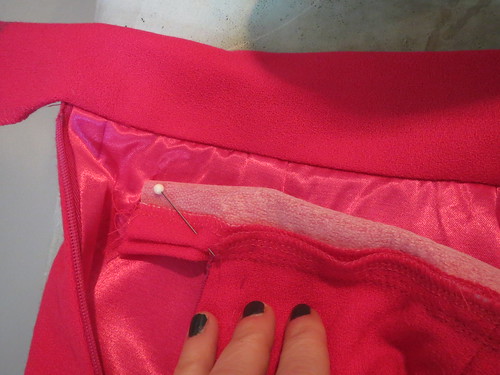
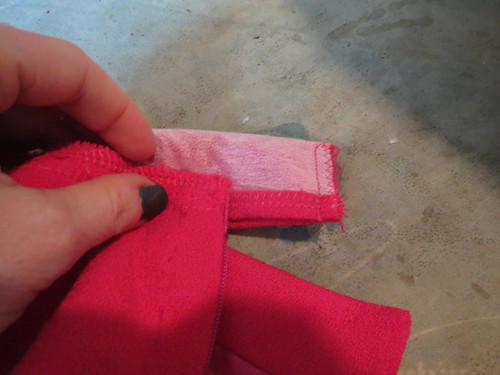
The only tricky part was that I was having one side of the waistband overlap at the back and close with a snap. For the squared off side of the waistband, I folded it so that the lower folded-under edge of the waistband on the outside that would be topstitched down at the front was longer than the back, ensuring the first row of stitching would be covered up.

For the extended tab side, this wouldn't work and I had to line up the two folded edges evenly, gradually changing the matchup as I got closer to the skirt, and then extending the front beyond the back to hide my stitching from sewing the first pass of the waistband to the wrong side of the skirt.
The finished waistband looks pretty good (not perfect) on the outside and the
inside.
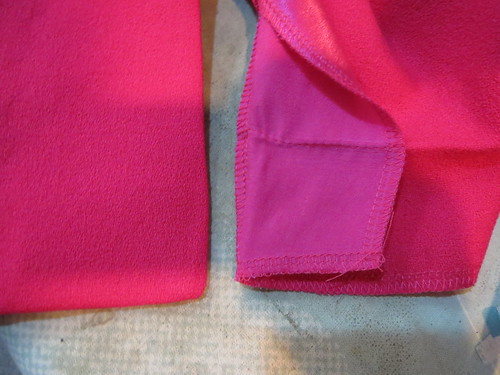
To get neat corners at the hem of the front slits, I used the slit facings. First I sewed the slit facings in place (before constructing the skirt--they have to be finished before the side seams are sewn). Then to hem I folded the slit facings to the right side and sewed the hem, right side of facing to right side of fabric, as far as the end of the facing. Trim the seam allowance, turn and press and you have a nice neat corner.

To finish the hem, I hand stitched the fashion fabric to the organza so it would be invisible.
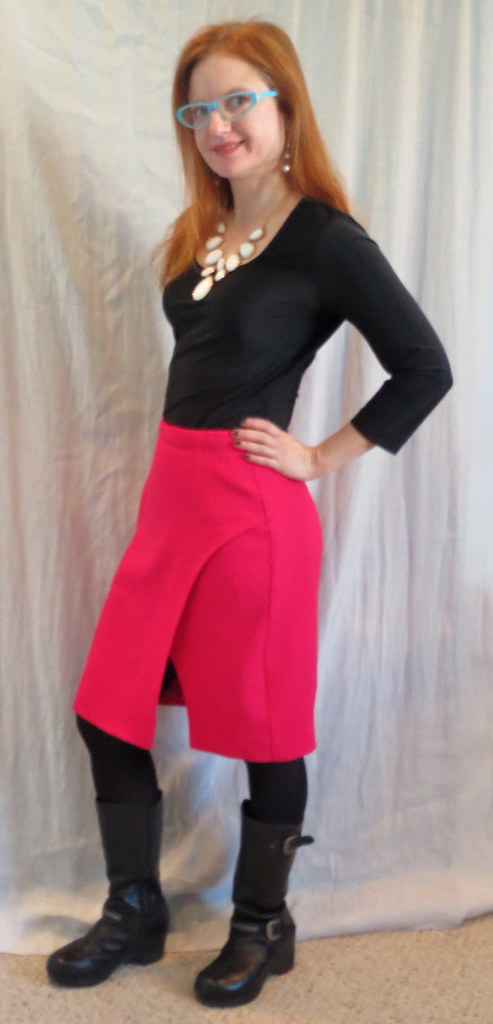
I am quite proud of how careful I was with this skirt and did everything
"right." The only unsatisfying thing is that the upper front does not
side quite flush against the under front. I was very careful in putting
it together, laying it flat on the table and making sure everything
lined up exactly.
What I *wasn't* thinking is that I am not shaped like a table. Two pieces that sit together perfectly on a flat surface don't necessarily do so on a cylinder. I should have folded up a towel to create more of a rounded human shape to line up the front pieces. I'm sure eventually I will undo that side seam (serging and all, ugh) and align the front pieces better, but I have not been in the mood yet.
That quibble aside, I do like this skirt a lot, and it is fairly bikeable (not total freedom of movement to swing my leg over the frame, but it is possible without fearing ripping the skirt). I love the color, but it made it a bit impossible to photograph as the camera just didn't know what to do with it--most of the photos are a little out of focus! I redid them, but the second set was worse than the first.
All photos are
here and the pattern review is
here.
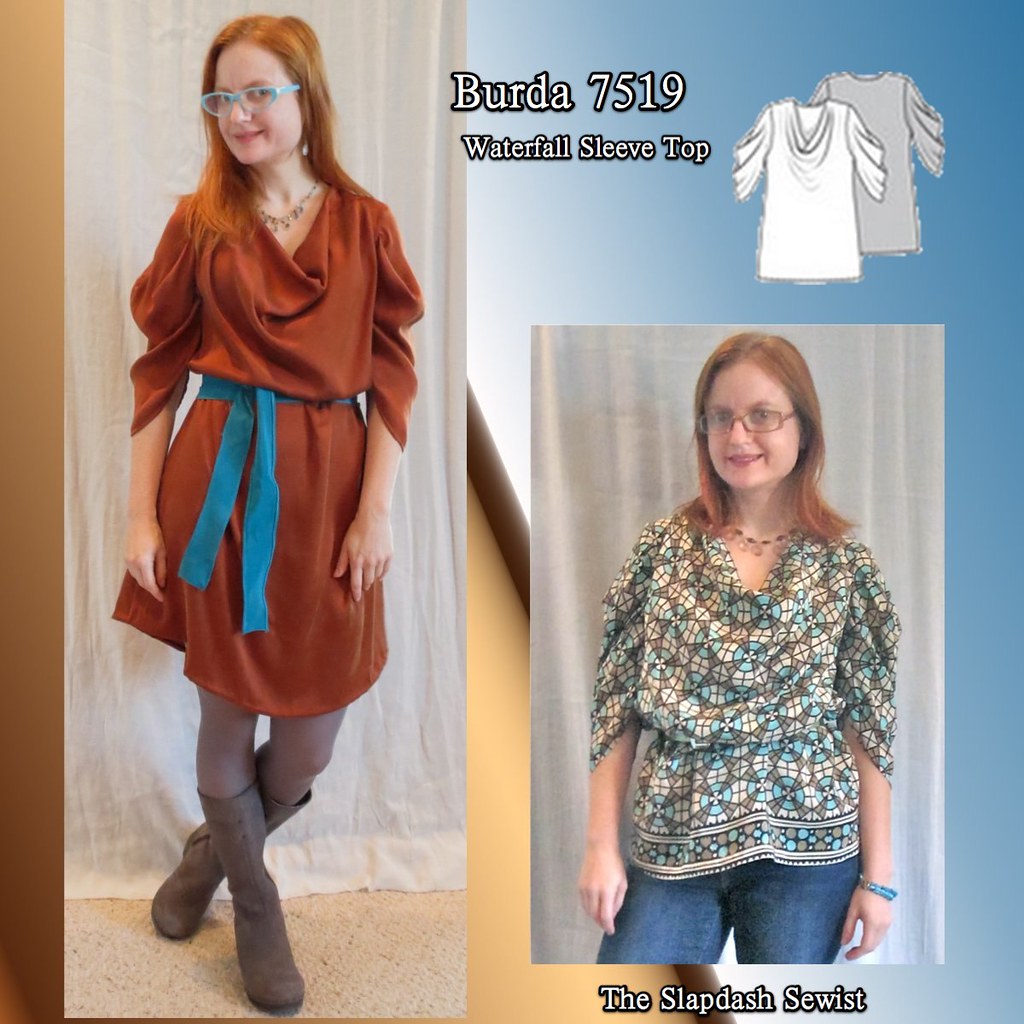


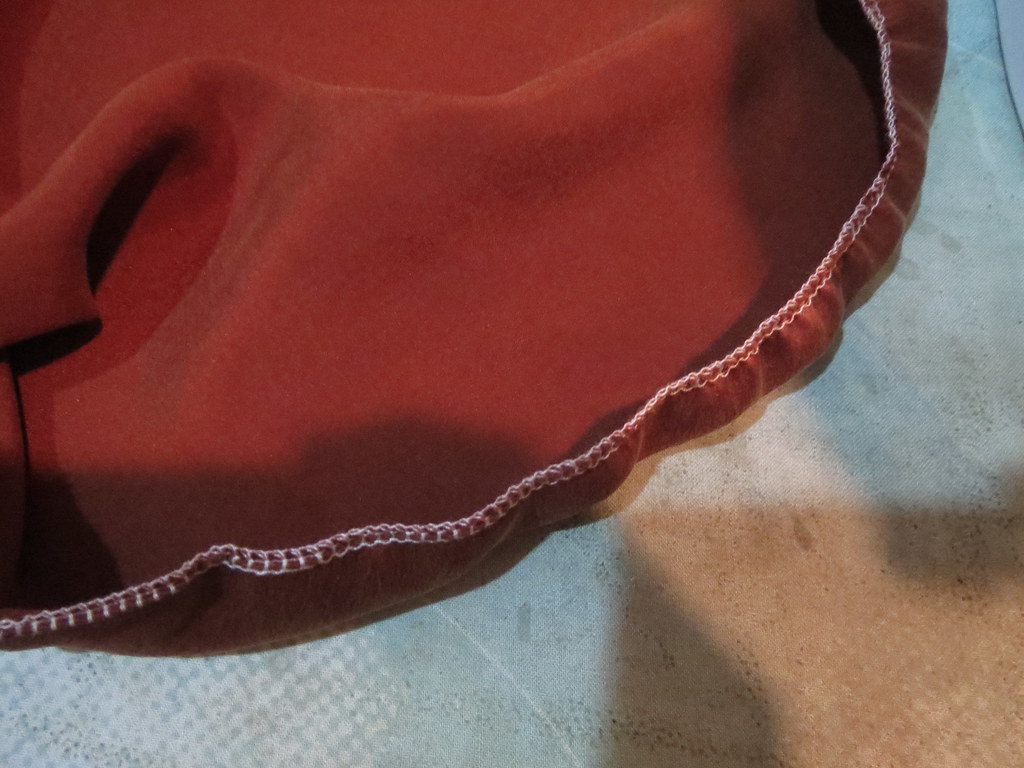

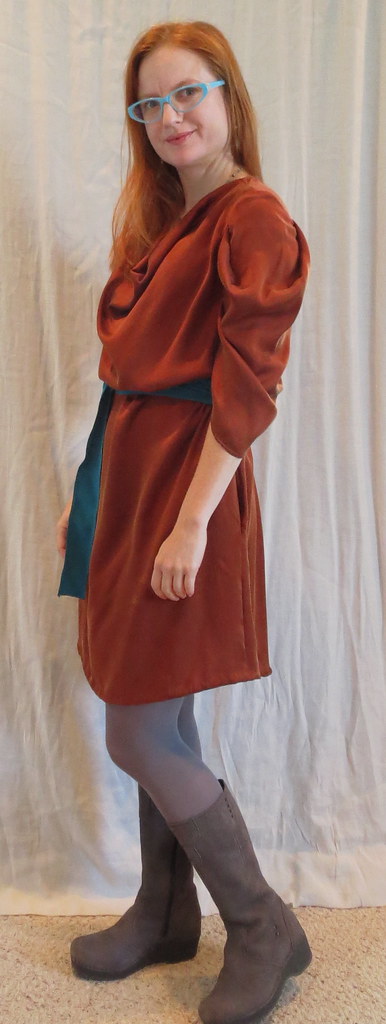
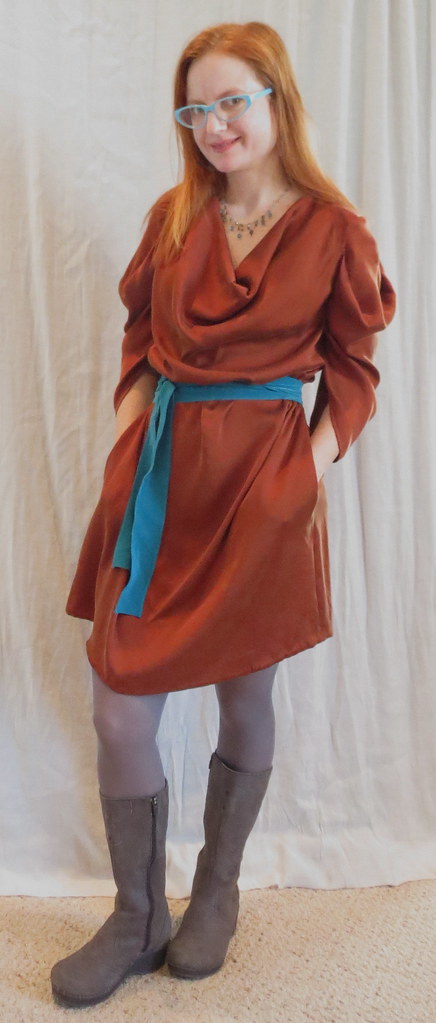

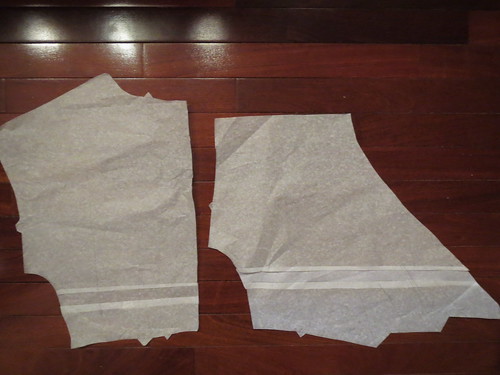
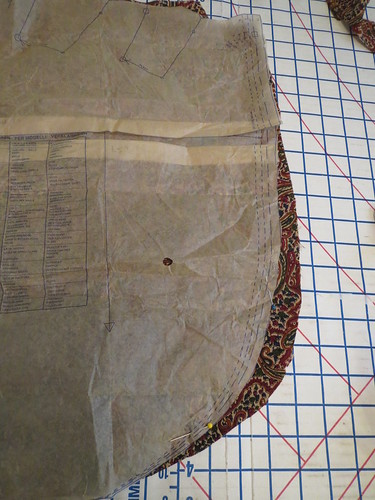


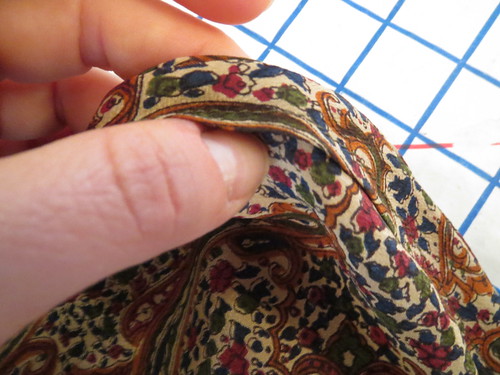
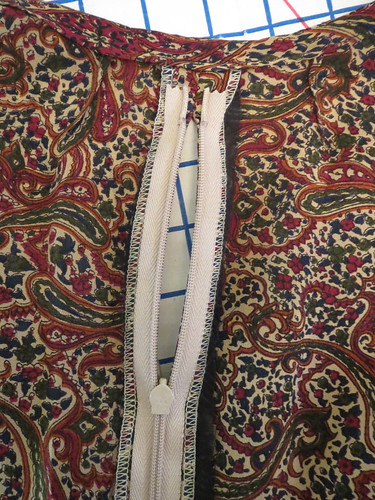















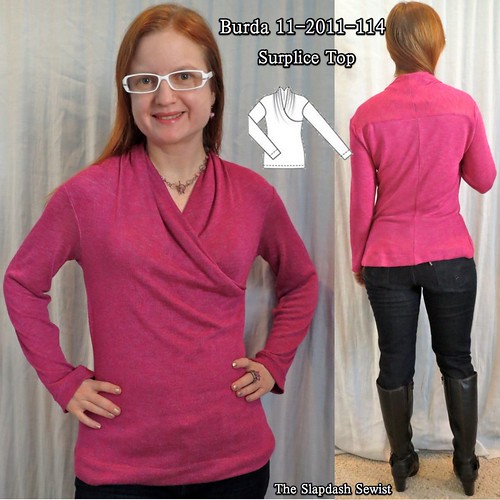

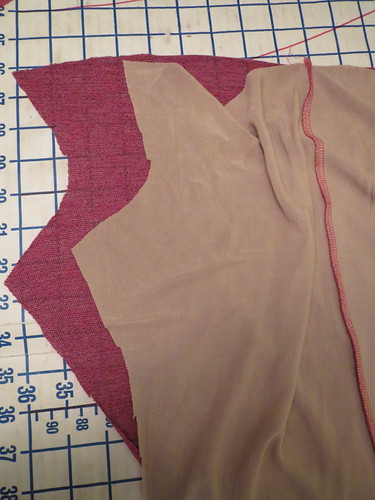

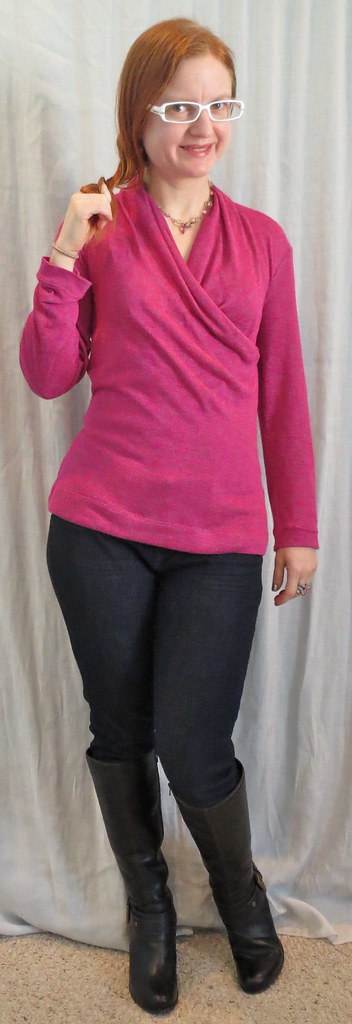










































































.jpg)









